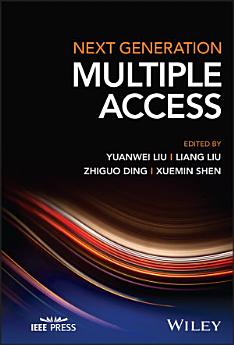Next Generation Multiple Access
આ ઇ-પુસ્તક વિશે
Next Generation Multiple Access is a comprehensive, state-of-the-art, and approachable guide to the fundamentals and applications of next-generation multiple access (NGMA) schemes, guiding the future development of industries, government requirements, and military utilization of multiple access systems for wireless communication systems and providing various application scenarios to fit practical case studies.
The scope and depth of this book are balanced for both beginners to advanced users. Additional references are provided for readers who wish to learn more details about certain subjects. Applications of NGMA outside of communications, including data and computing assisted by machine learning, protocol designs, and others, are also covered.
Written by four leading experts in the field, Next Generation Multiple Access includes information on:
- Foundation and application scenarios for non-orthogonal multiple access (NOMA) systems, including modulation, detection, power allocation, and resource management
- NOMA's interaction with alternate applications such as satellite communication systems, terrestrial-satellite communication systems, and integrated sensing
- Collision resolution, compressed sensing aided massive access, latency management, deep learning enabled massive access, and energy harvesting
- Holographic-pattern division multiple access, over-the-air transmission, multi-dimensional multiple access, sparse signal detection, and federated meta-learning assisted resource management
Next Generation Multiple Access is an essential reference for those who are interested in discovering practical solutions using NGMA technology, including researchers, engineers, and graduate students in the disciplines of information engineering, telecommunications engineering, and computer engineering.
લેખક વિશે
Yuanwei Liu, PhD, is a Senior Lecturer (Associate Professor) with the School of Electronic Engineering and Computer Science at Queen Mary University of London, UK.
Liang Liu, PhD, is an Assistant Professor in the Department of Electrical and Electronic Engineering at Hong Kong Polytechnic University.
Zhiguo Ding, PhD, is a Professor in Communications with the Department of Electrical and Electronic Engineering at the University of Manchester, UK.
Xuemin Shen, PhD, is a Professor with the Department of Electrical and Computer Engineering at the University of Waterloo, Canada.





